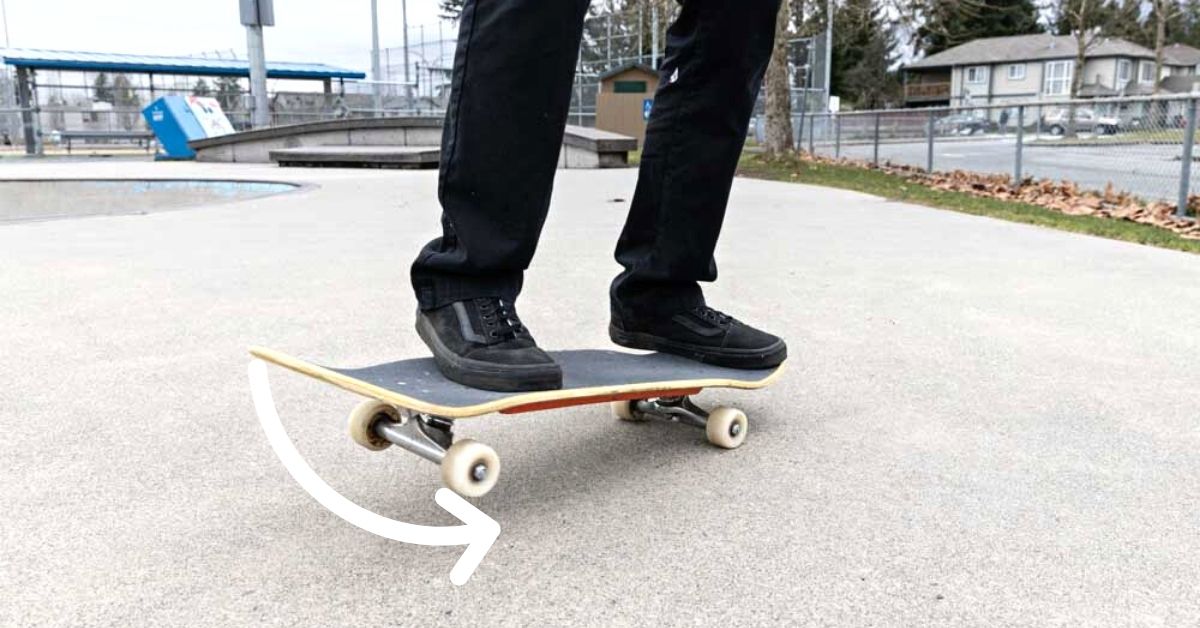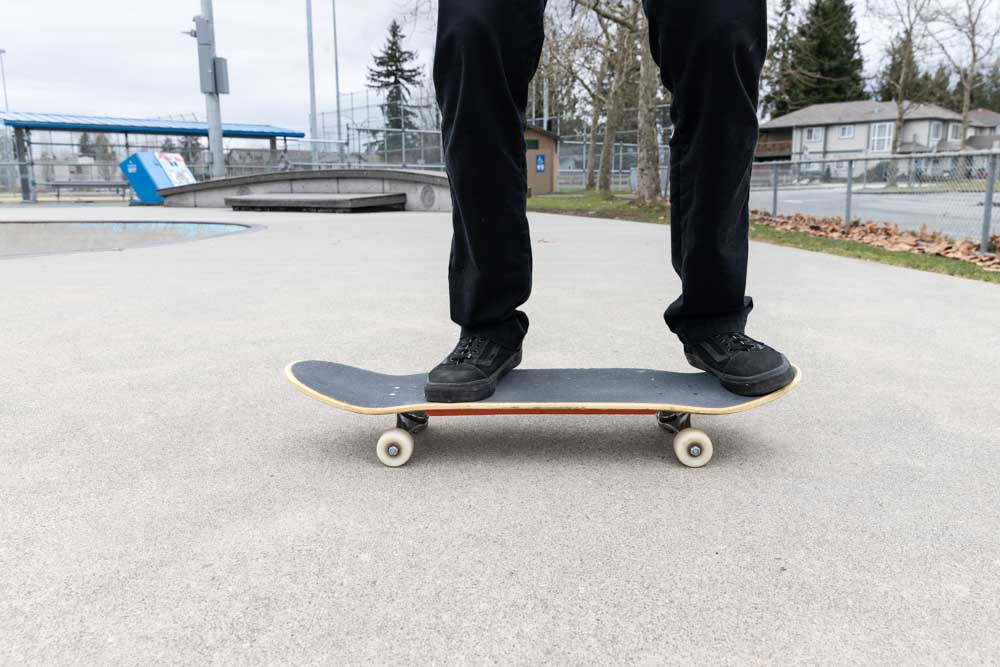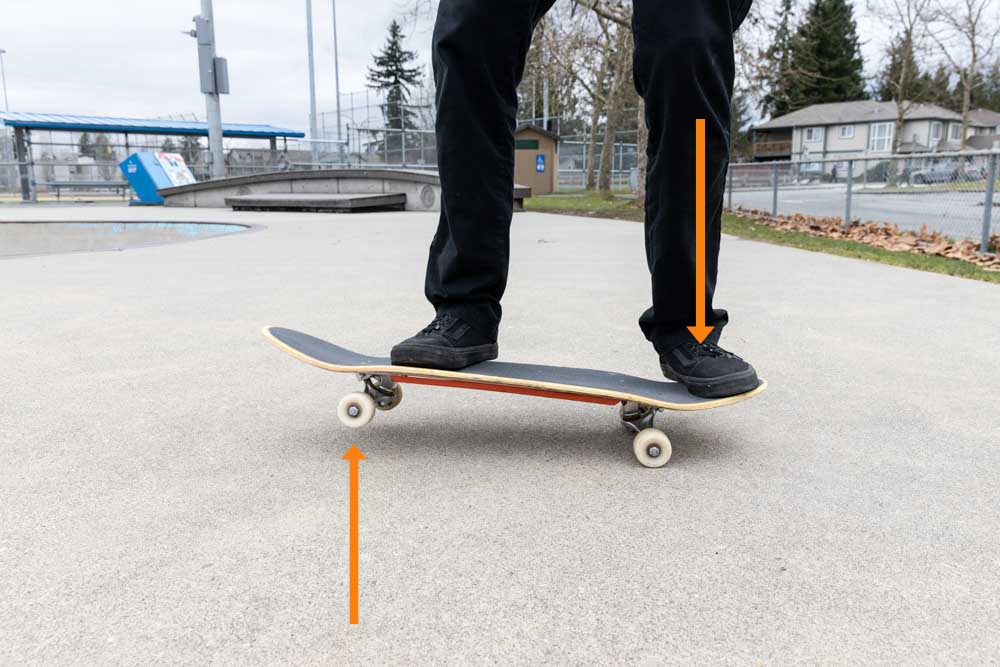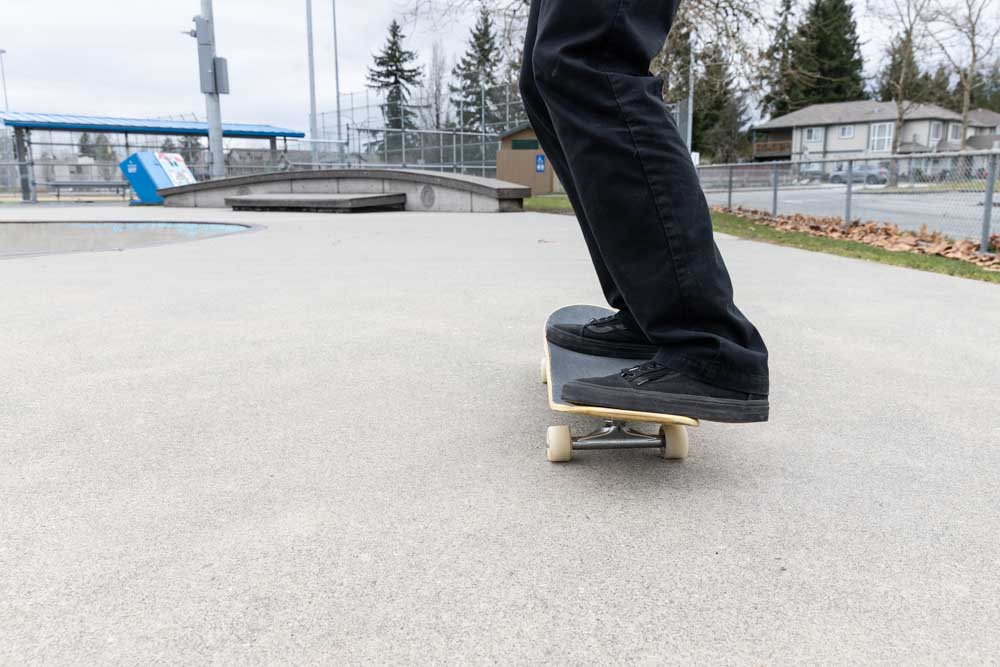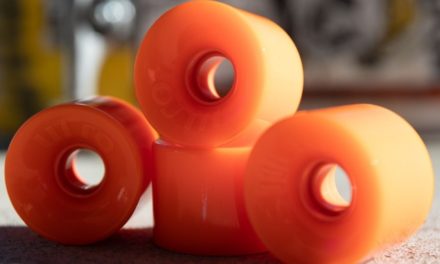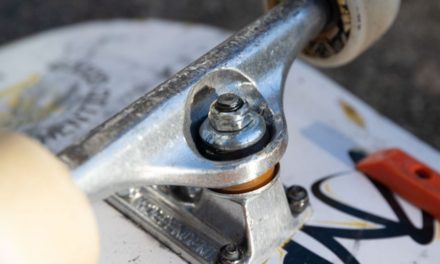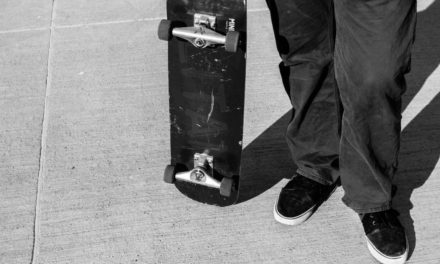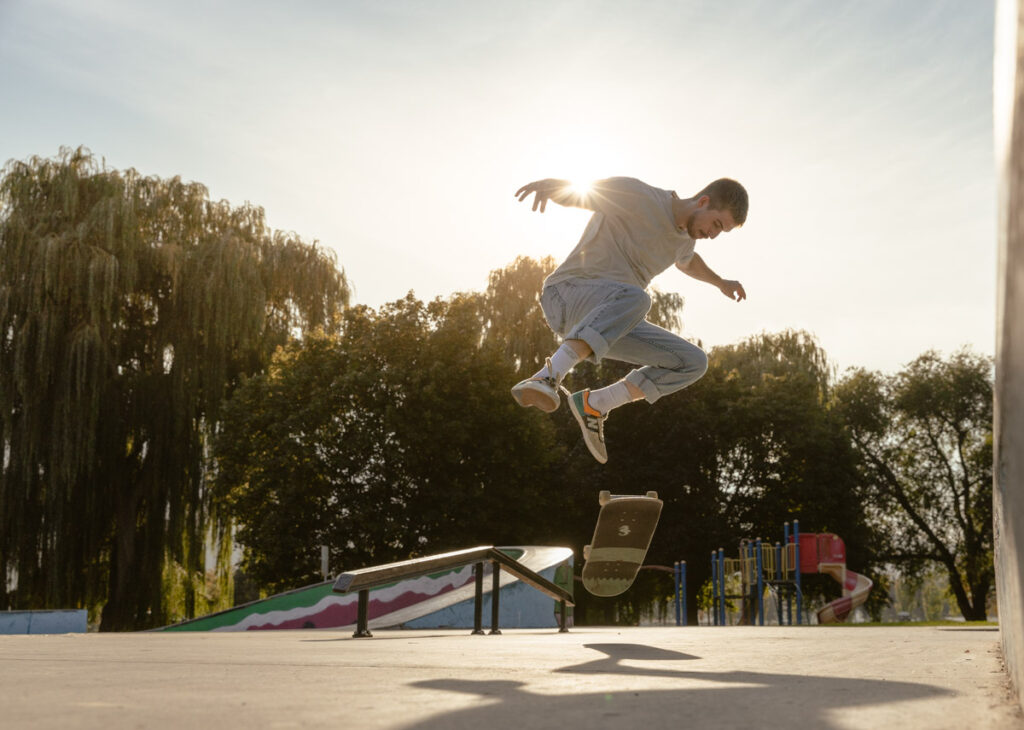After you’ve got your balance and pushing figured out, learning how to turn on your skateboard is the next important step in the process. There are a few different ways to turn your skateboard, some as simple as leaning, while others require you to lift and pivot the front of your board. However, if you’re a complete beginner, the following method will be the easiest for turning.
To turn on a skateboard, push off to gain momentum, then plant your feet shoulder-width apart on your board. Place your back foot on the tail and your front foot over the front trucks. With your knees bent, lean side to side to angle your board left or right. Now your board will begin to turn!
Since the trucks will rotate under your weight, the change in angle will cause your board to turn in the direction you want to travel. For beginners who are just learning how to push and balance on a skateboard, this will be the easiest option for turning.
With that said, there are some downsides to this since you can’t turn as sharply as you can with other methods. So what’s most important for you as a skater is to learn the different techniques for turning, so then you can use whichever one works best while you’re skating.
Throughout this post, you’ll learn the three main ways of turning, along with tips to help make each technique easier regardless of your skill level!
Let’s get started.
3 Ways To Turn On A Skateboard
1. Leaning Side To Side
The first way to turn on your skateboard is what I mentioned earlier. After pushing off, you can lean side to side to angle your board beneath your feet. Since the trucks will rotate slightly in the direction you lean, your skateboard will naturally turn in that direction.
The advantage of leaning is that you can do it at any speed without losing your balance. Since it’s more of a slow and gradual turn, the amount you lean directly impacts how sharply you will turn. This makes it ideal for all skill levels since you don’t need much technique beyond being able to balance on your skateboard.
Here’s How To Do It:
Step 1: Push Your Skateboard To Gain Momentum
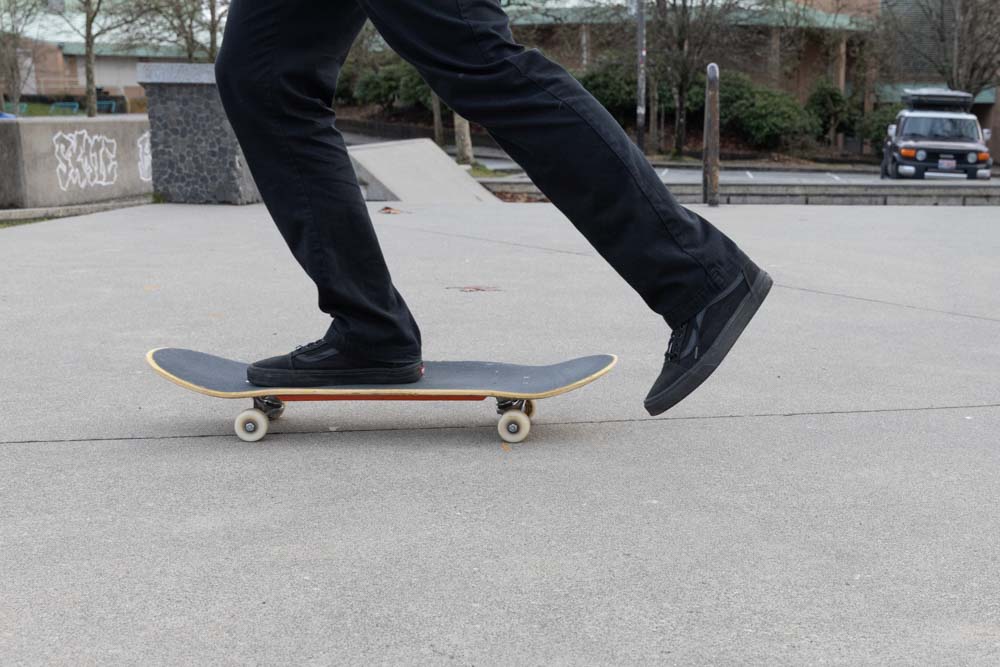
First, you need to push off to get rolling. Without any speed, leaning side to side will do nothing. It’s only when you’re moving that leaning will actually turn your skateboard! If you’re still not comfortable with pushing or aren’t sure which foot to use, check out this post on how to push on a skateboard.
Step 2: Plant Your Feet Shoulder Width Apart
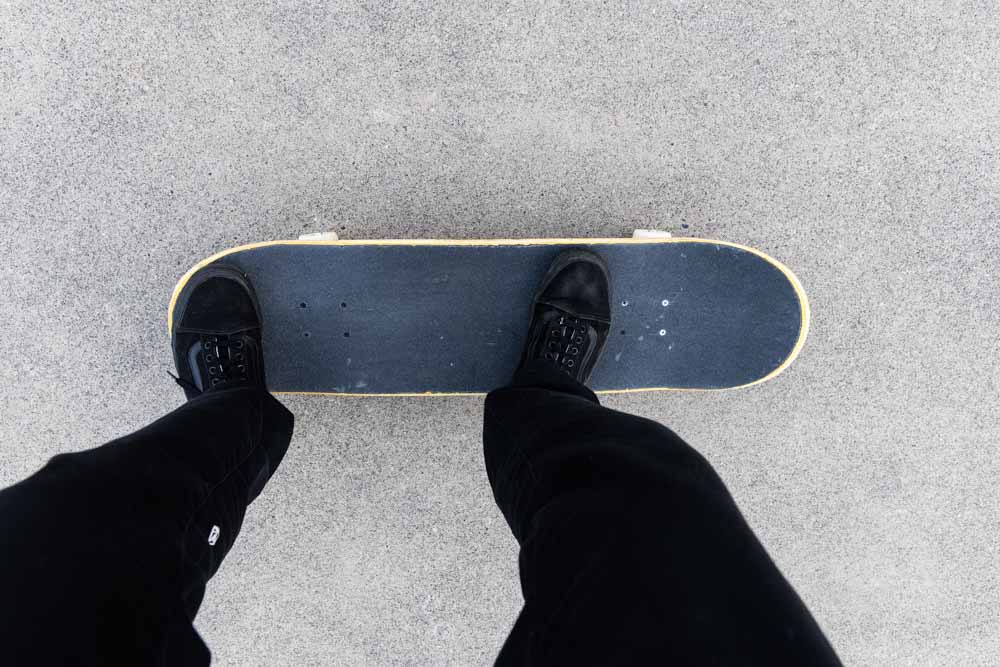
Once you’ve reached a speed you’re comfortable with, stop pushing and plant your feet back on the skateboard. For the best balance, try to have your feet about shoulder-width apart. Ideally, your back foot will be placed on the tail, while the front foot is placed near the front truck (aka the front bolts on your skateboard).
Step 3: Bend Your Knees For Better Balance
With your feet planted, bend your knees to help with your balance. It’s common for people to feel wobbly once they lean in the direction they want to turn, so bent knees will help lessen that!
Step 4: Lean In The Direction You Want To Turn

Now slightly lean in the direction you want to go. For example, if you lean forward, your board will turn in that direction too. The more you lean in, the tighter your board will turn. Before trying to do a tight turn, start with a slight lean to get a feel for your skateboard turning. As you feel more comfortable, progress into tighter turns with more leaning.
Step 5: Lean In The Opposite Direction To Create An “S” Turn

It’s important to feel comfortable leaning and turning in both directions on your skateboard. That’s why I recommend leaning in the opposite direction of the way you turned in the previous step. This will turn your board in the opposite direction and create an S-shaped turn. Continue to repeat this forward and back turning shape by leaning side to side as you feel comfortable. Once it starts feeling easy, try doing it at faster speeds or with tighter turning radiuses.
2. Kick-Turns

Kick turns are best for sharp turns since you can pivot your board as much as you want. They are also useful to reposition your board in the direction you want to travel, without having to get off and reposition the board with your hands. Although they are often used in conjunction with leaning side to side, this is another highly-useful way of turning on a skateboard.
Since this method requires you to lift up your front wheels and pivot your board, it’s definitely more tricky than just leaning side to side. So before you try this one, make sure you feel comfortable standing on your board and lifting up your front wheels without turning.
To do this, make sure your back foot is on the tail of your skateboard and add a bit of weight to your back foot while reducing the weight on your front. This weight shift will cause the front of your board to lift but can be placed back down by shifting your weight back to the front foot.
With kick turns on your skateboard, it’s important to note that these aren’t great at high speeds and will often cause you to wash out. This method is best for tight turns at low speeds, or to pivot your board in a new direction.
Here’s How To Do It:
Step 1: Plant Your Back Foot On The Tail & Your Front Foot Near The Front Trucks
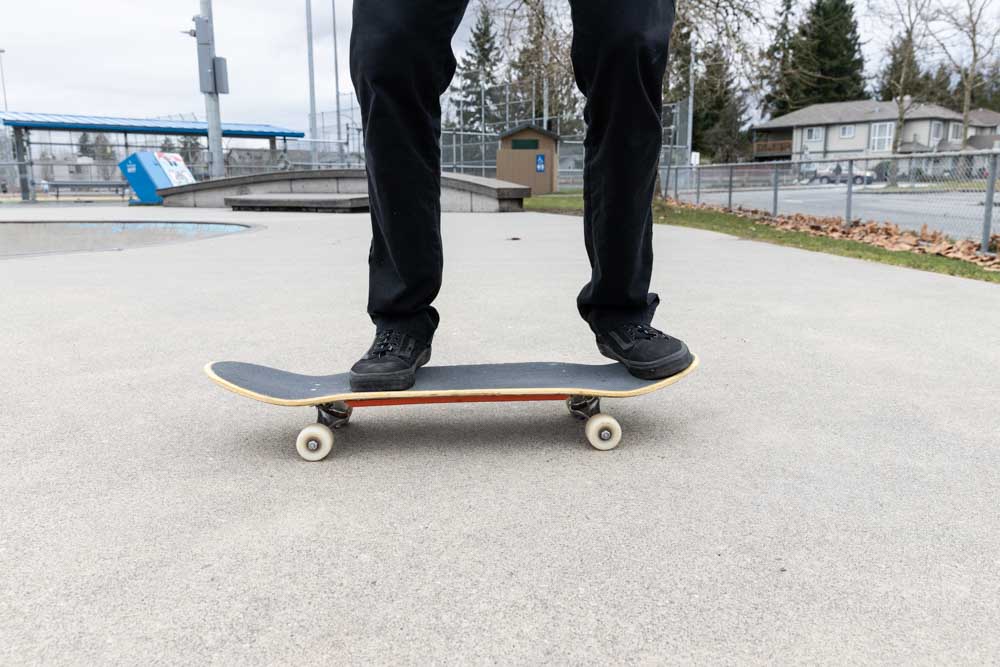
First, you need to get your feet in the correct position. To lift up the front of your board, your back foot must be on the tail. That’s because it will give you leverage to lift the front of the board as you add weight to the tail; an essential part of doing a kick turn. With your front foot, place it over or near the front bolts of your skateboard to offer you the best balance.
Step 2: Add Weight To The Tail & Bend The Front Leg
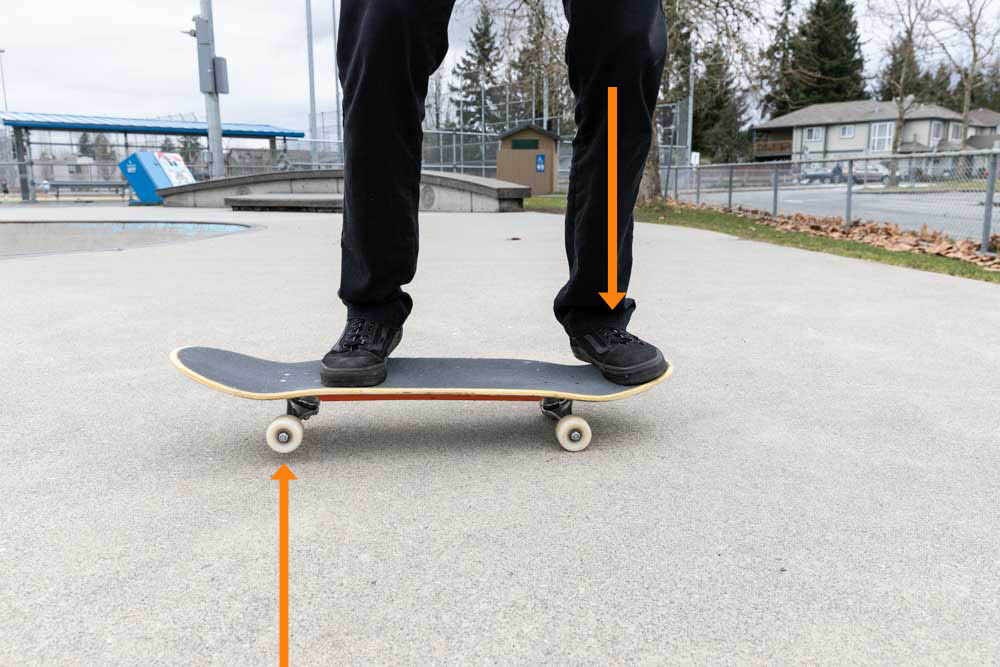
Next, add a bit of weight to your back foot while bending your front knee to lift up the front of your skateboard. If this is your first time doing this, repeat this step a few times to get a feel for it. Feeling confident lifting and lowering your front wheels is important for the next step.
Step 3: Turn Your Hips & Shoulders In The Direction You Want To Turn
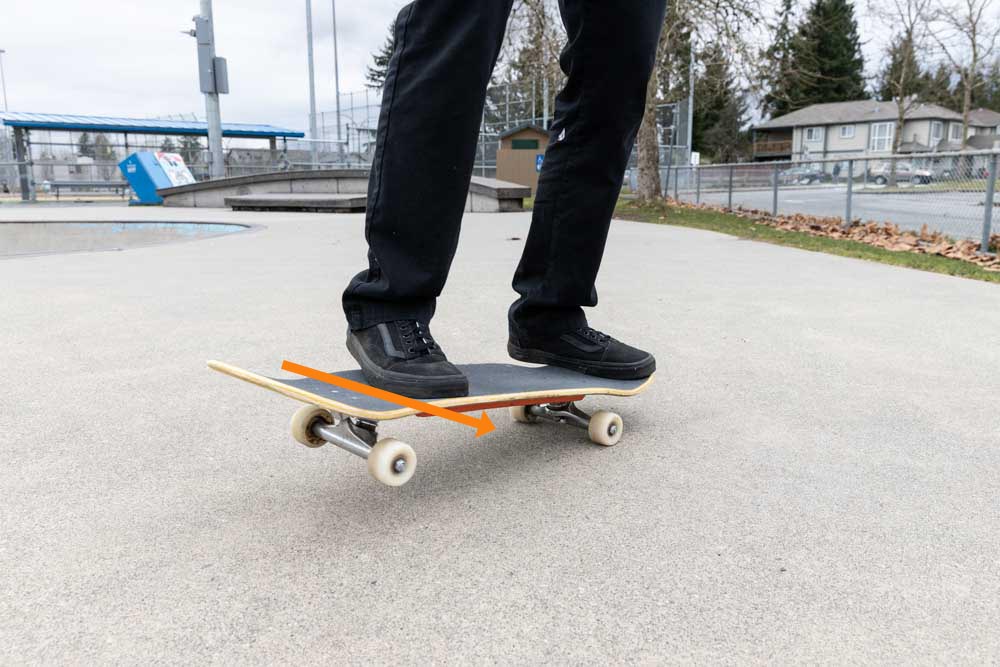
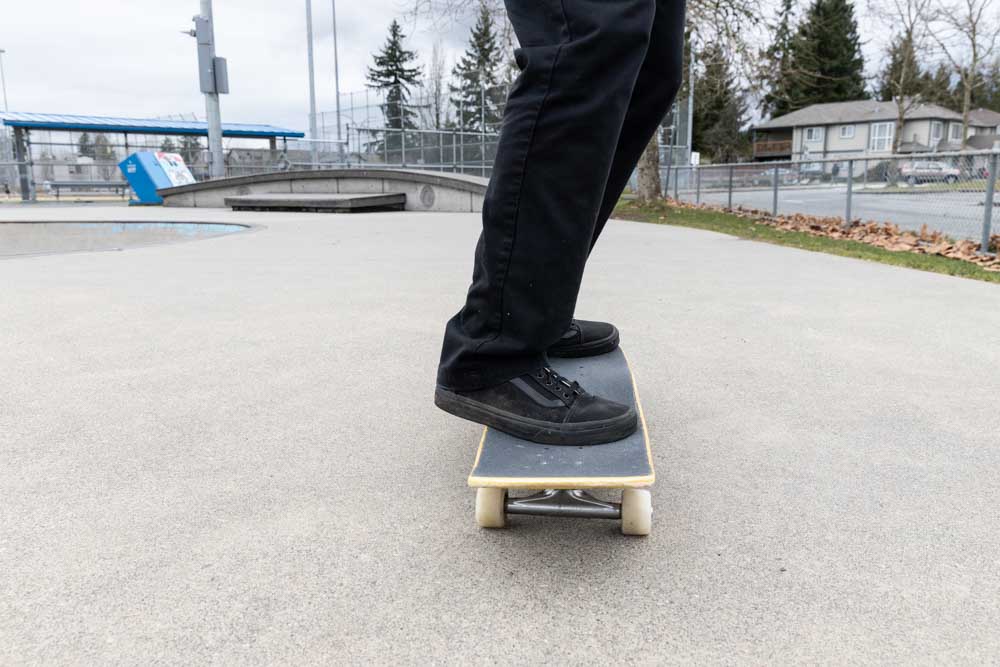
Once your wheels are off the ground, rotate your hips and shoulders together to pivot you and your skateboard together. An easy way to think about this is as if you’re a lego man. A lego man can’t turn its shoulders, hips, or knees separate from each other. If you pretend your shoulders, hips, and knees are all locked together too, pivoting your board will be a lot easier.
For most people, turning backside (towards your chest) feels most natural, so start with that. Start with a few small pivots, then gradually increase the size of your kick turns as you feel more comfortable.
Step 4: Turn The Opposite Direction
After you feel relatively comfortable kick turning in a certain direction, switch it up by trying to turn the other way. Just like leaning to turn your skateboard, it’s important to be able to kick turn in bother directions too. That way you will still be able to turn even if you find yourself in a situation where you can’t turn to your dominant side.
Just like before, pretend your shoulders, hips, and knees all move together. Once your front wheels lift up, rotate your body in that new direction. It will feel a bit awkward at first, but after a few small kick turns you’ll get the feel for it.
Once you feel comfortable with kick turns up to 90°, challenge yourself to kick turn in a full 180!
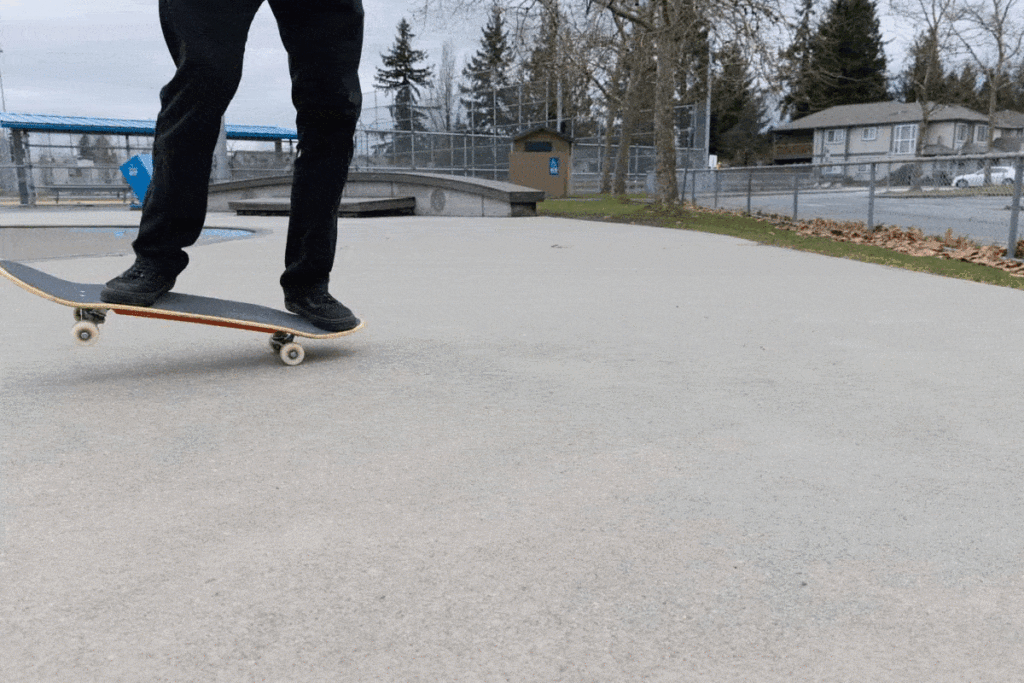
3. Tic Tac Turns
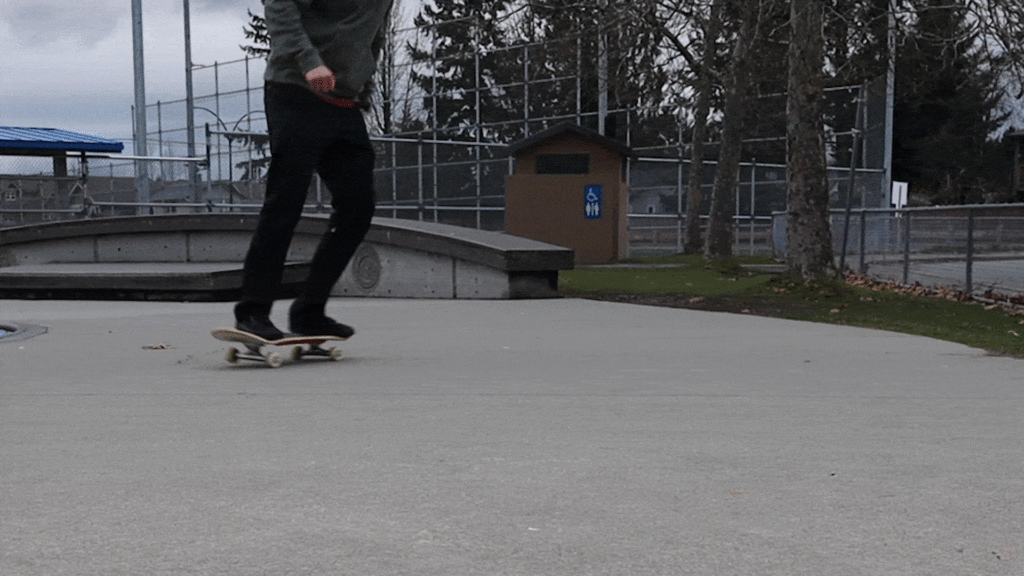
Building off of the kick turn, tic tacs are when you quickly kick turn from one direction to the other. This movement ends up creating forward momentum, allowing you to build speed without ever needing to push. The great part about this is that you can tic tac more in one direction than the other, inevitably causing you to turn. It’s also a great way to pick up a small amount of speed when setting up for a trick on a ledge for example.
Tic Tacs are the hardest turning technique on this list, so make sure you have the others ones down first.
Here’s How To Do It:
Step 1: Do A Small Kick Turn
With your feet planted in the same position as previously, weight your tail to lift up your front wheels, then rotate your shoulders and hips in your preferred direction. The kick turn shouldn’t be more than 45° from your starting position. Place the front wheels of your skateboard back down on the ground.
Step 2: Do A Kick Turn In The Opposite Direction
Once your wheels touch the ground on the first kick turn, lift them back up, and kick turn in the opposite direction. This time anywhere between 45° and 90° from your last position.
Step 3: Repeat
After your wheels touch the ground from your second kick turn, lift them back up and kick turn in the opposite direction once again. Repeat this process over and over until you get up to a comfortable speed for riding. Once you start to hear the sound your wheels make when they keep tapping on the ground, you’ll understand why this technique is called tic tacing.
How To Make Turning Your Skateboard Easier
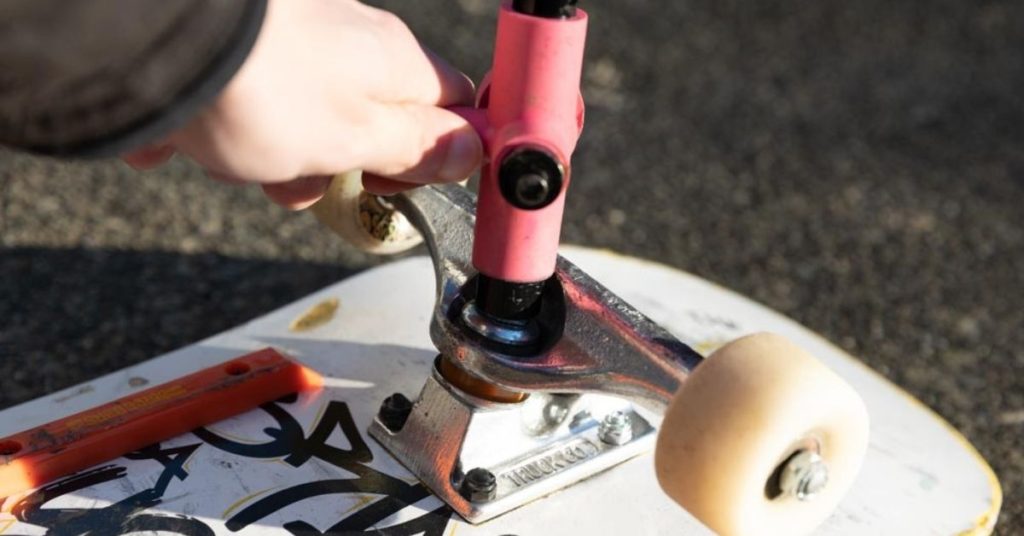
If you find that turning on your skateboard seems a bit harder than you thought, it could be because your trucks are too tight. With tight trucks, they can’t pivot as easily. This is perfect for feeling more balanced on your skateboard but makes it harder to turn.
To fix this, take a skate tool or a 1/2″ socket and adjust the kingpin bolt on your truck. This one’s easy to spot since it’s the big bolt right in the middle of the trucks. Doing your best to loosen both trucks equally, turn the bolt counter-clockwise to loosen your trucks. Sometimes even a quarter or half turn of the bolt is all the difference you need to have an easier time turning.
I highlight how to adjust your truck’s tightness and some extra helpful tips in my guide to tightening skateboard trucks.
Happy Shredding!

